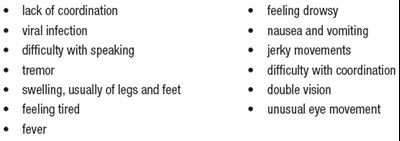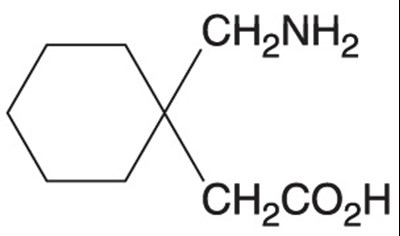Product Images Gabapentin
View Photos of Packaging, Labels & Appearance
Product Label Images
The following 15 images provide visual information about the product associated with Gabapentin NDC 71610-630 by Aphena Pharma Solutions - Tennessee, Llc, such as packaging, labeling, and the appearance of the drug itself. This resource could be helpful for medical professionals, pharmacists, and patients seeking to verify medication information and ensure they have the correct product.
sideeffects - Sideeffects

This is a list of medical symptoms that may be experienced by a patient. They include lack of coordination, viral infection, difficulty with speaking, tremor, swelling (usually of legs and feet), feeling tired, fever, feeling drowsy, nausea and vomiting, jerky movements, difficulty with coordination, double vision, and unusual eye movement. These symptoms may be indicative of a variety of conditions and should be assessed by a medical professional for proper diagnosis and treatment.*
Table-1 - Table1

This text provides a table indicating the recommended dosages of Gabapentin based on a patient's renal function. The dosages are given in terms of total daily dose, with different administration regimens depending on the patient's creatinine clearance levels. For patients undergoing hemodialysis, supplemental doses are recommended after each 4 hours of hemodialysis. The table also specifies the abbreviations TID, BID, and QD, which indicate different administration schedules. Overall, the text serves as a helpful guide for physicians prescribing Gabapentin to patients with varying levels of renal function.*
Table-2 - Table2

This is a table showing risk by indication for antiepileptic drugs in a pooled analysis. It provides information on the incidence of events in placebo patients and drug patients, as well as the relative risk and risk difference. The indications shown are epilepsy, psychiatric, and other.*
Table-3 - Table3

This is a table presenting the adverse reactions of patients who received gabapentin or placebo in pooled placebo-controlled trials for postherpetic neuralgia. The table shows the number and percentage of patients who experienced different adverse reactions, organized by different body systems. Adverse reactions include asthenia, infection, accidental injury, diarrhea, dry mouth, constipation, nausea, vomiting, peripheral edema, weight gain, hyperglycemia, dizziness, somnolence, ataxia, abnormal thinking, abnormal gait, incoordination, pharyngitis, amblyopia, conjunctivitis, diplopia, and otitis media. Blurred vision was reported.*
Table-4 - Table4

This is a table presenting adverse reactions reported in pooled placebo-controlled add-on trials in epilepsy patients over 12 years of age with Gabapentin® and placebo treatments. The table presents adverse reactions by body systems, including Body as a whole, Cardiovascular, Respiratory, Skin and Appendages, Urogenital, Digestive and Nervous Systems, and Special Senses. The number of patients (N) and the percentage of adverse reactions (%) are presented for each treatment group. The adverse reactions experienced by patients on Gabapentin® treatment include fatigue, peripheral edema, dyspepsia, somnolence, dizziness, ataxia, nystagmus, tremor, dysarthria, amnesia, depression, abnormal thinking, abnormal coordination, impotence, diplopia, and amblyopia. Blurred vision is often described as amblyopia.*
Table-6 - Table6

This is a table showing the details of controlled PHN (postherpetic neuralgia) studies, including duration, dosages, and number of patients. Study 1 lasted 8 weeks and had a target dose of 3600mg/day of Gabapentin, with 113 patients receiving it and 116 receiving a placebo. Study 2 lasted 7 weeks and had target doses of 1800mg/day and 2400mg/day of Gabapentin, with 223 patients receiving it and 111 receiving a placebo. The total number of patients in both studies was 557. Gabapentin was given in 3 divided doses (TID) in Study 2.*
clcr - clcr

This text seems to be a medical formula used to calculate the optimal dosage of medication for female patients based on their age, weight, and serum creatinine levels. However, without more context and information, it is difficult to provide a more specific description or interpretation.*
Figure-1 - figure1

The figure shows the weekly mean pain scores observed in the ITT population for Study 1. The baseline score was 10 and the mean score decreased over the weeks while the patients were taking a drug called Gabapentin (dose of 3500 iy). The figure provides pain scores for weeks 1 to 8.*
Figure-3 - figure3

The text appears to be a graph with the title "Figure 3. Proportion of Responders (patients with >50% reduction in pain score) at Endpoint: Controlled PHN Studies". The graph likely shows the results of two studies (Study 1 and Study 2) with treatment types- PBO, GBP 1800, and GBP 2400. The y-axis appears to show percentages ranging from 0% to 100% with incremental steps of 10%. However, the symbols and numbers are not discernible, so the information represented by them is not available.*
* The product label images have been analyzed using a combination of traditional computing and machine learning techniques. It should be noted that the descriptions provided may not be entirely accurate as they are experimental in nature. Use the information in this page at your own discretion and risk.





